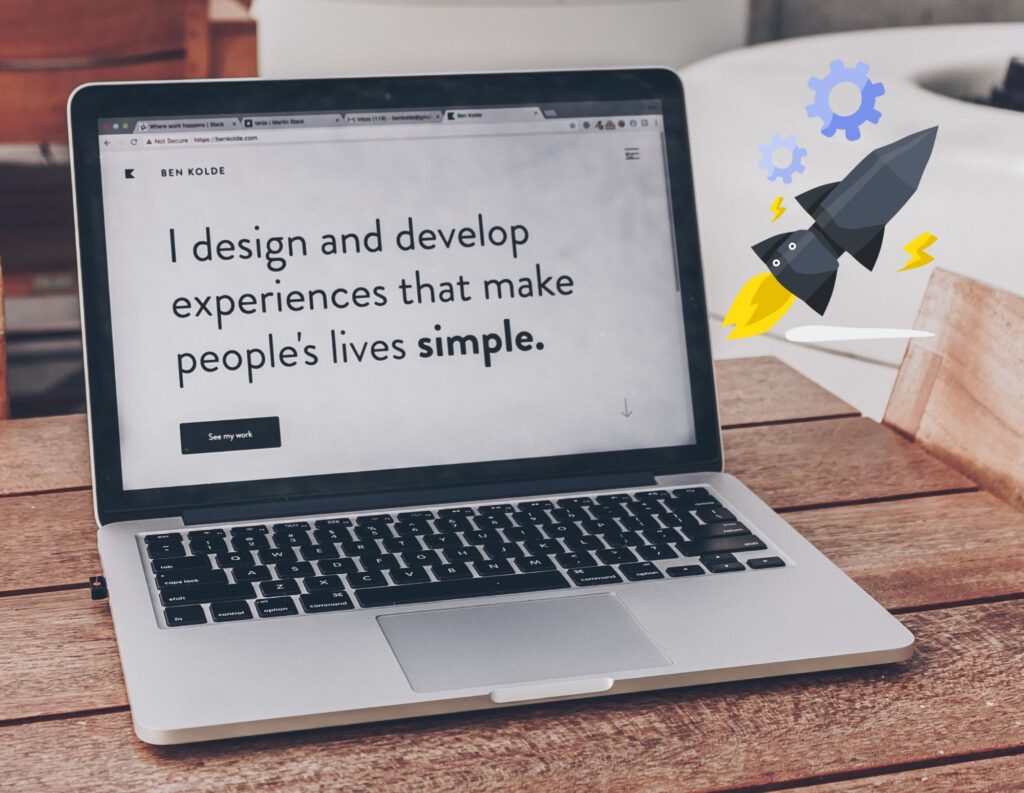Your website design is your key to lead generation. Clients will flow your way if your information is clear, concise, up-to-date, and you’re easy to get ahold of.

When it comes to your website, you’ve probably already compiled a list of things to include to draw in your ideal client: which pages you will have, what photos of your work you will display, the contact information you’ll list publicly… the list goes on. But, as a professional website designer, I look at a lot of small business websites. I mean, like hundreds each week. So, I have my own list of the top three website mistakes, with features that make me absolutely cringe.
Or in your case, the list of website features that can stunt a sale at first glance and send your potential clients running. Cringe, right?
Why should you trust me?
I am the owner and designer of Kelly Ryann Co., a boutique brand and website design studio that serves small business owners across the US. We work with clients who are looking to upgrade their online presence through a brand facelift, custom website design, or SEO overhaul. We specialize in working with creative service providers and thrive on getting our clients the kind of results they’ve been dreaming of.
My line of work allows me to see the success stories and unfortunate failures of all kinds of independent businesses. So when auditing a new client’s website or just browsing for inspiration, I see many cringe-worthy features that can instantly draw a potential client away from a website.
The top three website offenders that are preventing you from booking your ideal client:
Let’s start with vague offerings
This one hurts my soul because I just want to ask:
Are you trying to make purchasing your services difficult?
When looking for a service provider, I, as your potential ideal client, want to know if you offer what I am looking for or not. Simple as that.
If I can’t get that question answered, I am not even going to go hunt for pricing, style, and availability. I need to know if you offer custom wedding seating charts (or two-hour family photo sessions, or brand strategy calls…) If your services page lacks clear service descriptions, I am automatically putting up a red flag and leaving your website. Don’t even get me started on the websites that are missing a service page completely.
Missing clear offerings on your website will result in fewer client inquiries and long term can really hurt the overall health of your business. If you are a service provider, then your business runs on client work. No clients can quickly mean no more business.
How to improve your offerings
Go into your website design with a clear idea of what you do and who your ideal client is. This was likely a large part of your start-up work when you first started out. You probably spent hours dreaming up what you would offer and the kinds of people you would serve. Now get into the nitty-gritty details and make those offers known on your website. List what each service includes and what each package offers. You can even have a downloadable service guide with project timelines, potential results, and case study clients if you want to be really thorough.
Make it easy for prospective clients to find your services, and add a call to action (or CTA) to your services page so prospective clients can either 1) easily ask questions or 2) book with you.
Whether you are working with a professional website designer or doing it all yourself, this fix will not only improve your website but give you a clear understanding of your offerings and who you are targeting. Being confident in that information will help improve your sales calls right away.
Download the great first impressions workbook
Use our process mapping worksheet, ideal client profile, contact form template and more to qualify your ideal client
Get The WorkbookHaving a website with little to no copy
This one I see a lot for service providers like photographers, calligraphers, and interior designers. Independents who are visual creatives. Yes, your business is primarily built on what you can offer visually. However, most potential clients are also looking to hire someone based on their experience, personality, and story. Although sometimes hard to believe, people want to like the person they work with. Making a connection with someone is the best way to make a sale. When we lack the words to portray all of this, we miss out on an opportunity to book our ideal client.
Best ways to add copy to your website
You have a couple of options when it comes to website copy. You can either do it yourself or hire a copywriter. As many of us in the early stages of starting our businesses become DIY experts,
let’s dive into this option.
Do-it-yourself website copy
When writing your own website copy, you want to focus on your brand voice, website structure, and SEO keywords.
Start by thinking about the voice you want to represent your brand. Does it sound professional and smart, witty and clever, humorous and entertaining? Maybe it is some combination of these options, but try to pick a voice style and stick with it throughout your website. You will also want to think about your ideal client as you write. Your copy should be directed at the client you are hoping to book. Creating this message consistency helps potential clients leave with a strong understanding of who you are and what kind of clientele you serve.
Think critically about content structure
Next, consider the structure of your website. Ask yourself, “where can copy enhance what you have to show and say on each page, and where should you dial back?” According to UberSuggest.com, a top-ranking SEO tool, “In general the average web page that ranks on page 1 of Google contains 2200 words.” 2000+ words may be a big goal to start with, but you’ll want to aim for at least 1000 words per page, with a few pages around that 2200 word threshold as you start out.
Use the right tools and hire the right professionals
Finally, don’t forget about your keywords. Whether you are doing the keyword research yourself or hiring an SEO strategist to do this work for you, spend some time coming up with a list of keywords that apply to your business and that you want to be found for. It is an outdated practice to pick just one keyword and stuff it all over your website, so instead use tools like Google or SEMRush to come up with 3–5 keywords to use throughout your site. Using well-researched keywords can drastically improve your SEO, meaning you get on Google’s good side and rank higher as clients use Google search. Boosting your SEO will result in more clients finding you through organic search. That is a win-win for everyone!

Pro tip: If you’re short on time, check out an AI tool to help you with your writing. If you’re still feeling stuck, I recommend you start by looking at other websites you love and see what kind of copy they include. Try sticking within your industry to see what types of pages are common and what areas you feel you can stand out in.
Lastly: you don’t have a contact form
This one just really gets me. Mostly because the fix is so beyond easy (especially for HoneyBook users).
When a client comes to a website that says “to book, email me at [email protected]” or “contact by calling 555-555-5555,” they are going to click out of that site 9 times out of 10. Okay, that is not a researched statistic, but based on my own clients’ anecdotes and previous website performance, it has to be true.
We live in a world where talking to someone on the phone brings literal hives to half of the population. What makes you think that a stranger is going to pick up the phone during their lunch break to ask you about your rates?
Even the email option makes people uncomfortable because they don’t want to think about how to start a conversation. Although communicating with clients about our services is second nature to most of us, we have to assume it is new and uncharted territory for most of our clients. My hands are covering my eyes just thinking about how I would start an email to ask about balloon decor for my dog’s birthday party because I don’t even know where to begin.
Do you see my point?
If you’re missing a contact form on your website it means you’re making the process of a client reaching out to you that much harder. Clients, like everyone else, like to keep things simple, so build your website in a way to make it as easy as possible to book with you.
The fix: use a contact form
Whether that be a form from your website platform or straight through HoneyBook, having a contact form specifying the information you need from a prospective client helps you collect the information to get the conversation started (hello, sales pitch!) and qualify the lead. Prescriptive contact forms also give prospects guidelines on what to say and ask. You can include specific multiple-choice questions, or more open-ended questions on your HoneyBook form so that you can get exactly what you need to move on to closing a sale. There are tons of ways to personalize your contact form and embed it right onto your website, making client inquiries even easier.
One of my favorite things about using HoneyBook is that you can set up an automation so that anytime someone fills out your contact form, they are automatically sent a link to then book a discovery call with you through the HoneyBook scheduling feature. This helps you get connected with potential clients even faster, which is huge in closing a deal. HoneyBook has detailed information on how to set up this type of automation to start booking clients faster.
What are your next moves?
With my cringe list laid out for you, take a moment to audit your own website. Check your site against my top three offenders and make fixes as you see fit. If you are working with a professional designer instead, bring up this list to them and ask them to avoid these sales-squashers. A good designer will already have these in mind when planning for your website.
Based on my experience in working with dozens of small business owners, the best thing to consider while working on your website: always, always, always have your ideal client in mind. My most successful clients have websites that speak directly to their ideal clients and make navigating through their offers simple and enjoyable. Their websites are built to ensure an easy and pleasant experience for any visitor that comes their way.



